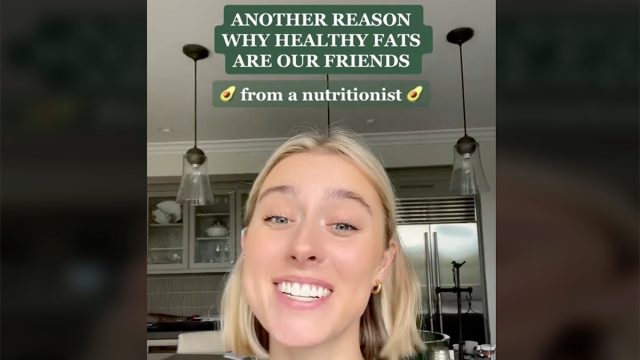#1 Reason Your Body Needs Healthy Fats, According to Nutritionist
It might seem counterintuitive, but in order to lose fat, you have to eat it. However, not all fats are created equal. Claire Sorlie (@clairethenutritionist) is a Certified Nutritionist, NTP, BFA, who specializes in gut health. In one of her many viral videos, she explains why you need to incorporate them into your diet. "There's another reason why healthy fats are our friends, and they shouldn't be feared from a nutritionist," she says in the viral TikTok clip. We also consulted The Body Network's Resident RDN, The Diet Diva, Tara Collingwood, MS, RDN, CSSD, LD/N, ACSM-CPT, a Board Certified Sports Dietitian, to weigh in on her tactics.
The Body Needs Vitamins A, D, E, and K
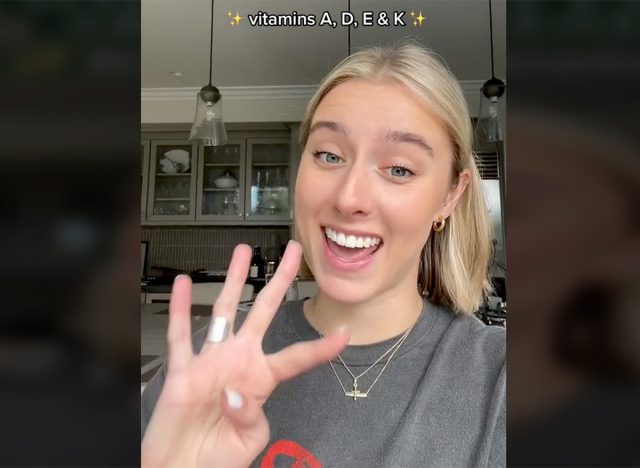
She starts off by explaining the nutrients necessary for health. "Four really important vitamins that the body needs are vitamins A, D, E, and K," Claire says.
They Are Fat Soluble Vitamins
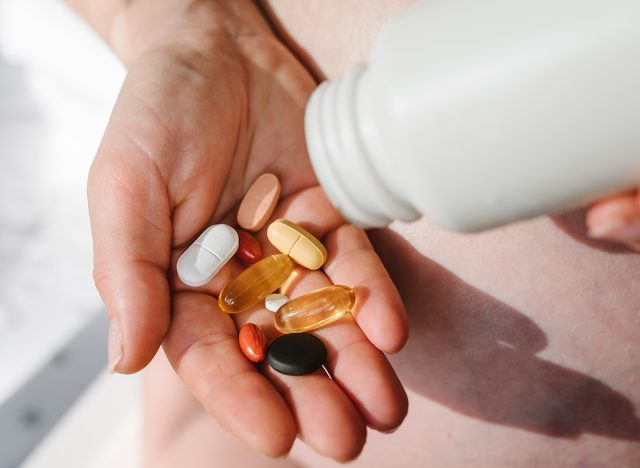
Interestingly, in order to work, vitamins need fat. "These are also our fat soluble vitamins, which means that they need a fat in order to be absorbed and used in the body," she continues. "These vitamins are literally designed to work properly with a fat."
RELATED: The Real Reason You Can't Lose Weight (From Someone Who Lost 100 Pounds)
If You Don't Consume Enough Fat, the Body Won't Absorb Nutrients
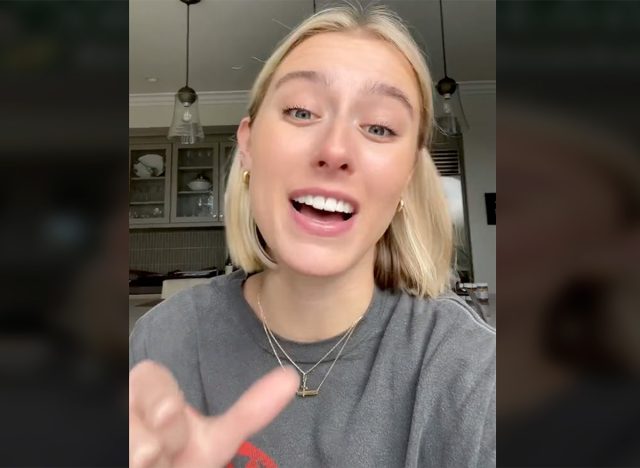
If you are on a low-fat or nonfat diet, you might be missing out. "If we're consuming a low fat diet or having a nice big salad with no fat, the body may not absorb any of those nutrients," she adds.
These Vitamins Are Important for Heart Health

Why are those vitamins so important? "A, D, E, and K are all important for things like our cardiovascular health, immune health, mental health, and bone health," Claire says.
RELATED: Massy Arias Shows Off Her Washboard Abs and Shares Her Best Stretch for Your Lower Back
RDN Agrees
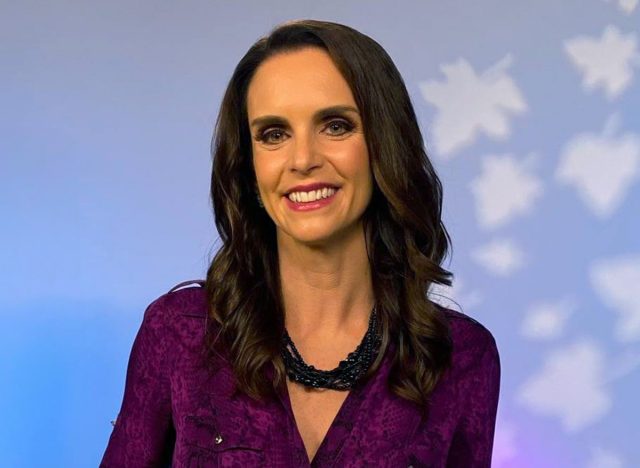
Collingwood confirms that fats are necessary for your body to absorb vitamins. "These Vitamins are classified as fat soluble vitamins which means they do need some fat in the diet to be properly absorbed, ideally at the same meal," she explains. "Vitamin E is often found in foods that already contain some fat like nuts and seeds, but Vitamin A and K are found in fruits and veggies." She suggests aiming to have a little bit of good fat at every meal.
💪🔥Body Booster: Make sure you are eating enough fats to absorb the vitamins and nutrients your body needs to thrive.
@clairethenutritionist hot girls eat healthy fats 💅🏻 #nutritiontips #eathealthyfats ♬ original sound – ClaireTheNutritionist
